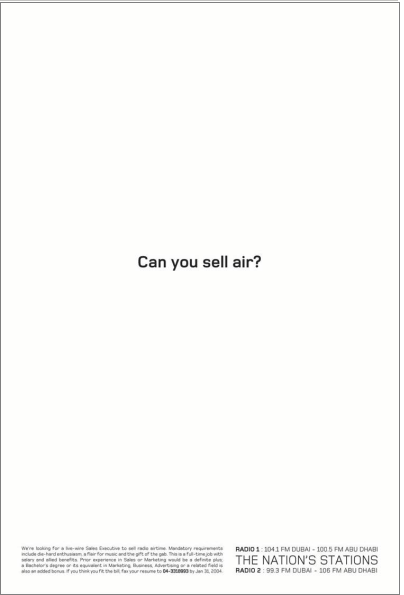Your company is top notch and you’re looking for top notch employees. A new position just opened up and you need to fill it soon. You know that this position would be perfect for the right person, and the benefits are competitive.
So you create a job description, publish the listing, and wait. The applications start to roll in, but there’s one big problem: None of the applications have fulfilled the requirements listed, and even worse, it appears that many of the candidates didn’t even read the job description!
Sound familiar?
If you’re not getting high quality applicants, it may be a sign that it’s time to write a brand new job description. With these tips, you’ll find out how to give your job listing an edge so that you can attract the best applicants around.
1. Research each individual job website
Visit the website where you plan to post the job. Browse a few of the other job listings and check out your competition. Doing this will help you write a job description with your audience in mind.
Studies show that an overwhelming number of job seekers – as much as 45% – use their mobile phones to search for job openings. This tells us that there are a growing number of non-readers, skimmers, and browsers in the workforce.
The result from analysis done on the current labor market says that Generation Z is entering the job market seeking experiences and are more receptive to visuals than text. The recruitment industry and forward-thinking HR professionals should be aware of this when crafting effective job posts.
2. Don’t be afraid to show off your company’s personality
Find that fine line between interesting and weird. Start by omitting the company history – the interested applicants can (and should) be able to find this information with just a few taps of their keyboard.
Instead, use that space for a winning description. The listing should be divided into clearly labeled sections: Job responsibilities, ideal qualifications, what the company offers, and the application process.
Please, avoid an endless wall of text – the information must be easy to digest. Instead, organize your thoughts with subheadings and bullet points. Be concise and try to avoid dry sentences that start with, “A qualified candidate will demonstrate…”
Believe me, overused descriptions like this will make your readers yawn.
Instead of saying that your company is looking for candidates who are “passionate” and “results-driven,” provide examples of what success means for the specific role.
The more examples you can provide, the better.
3. Know the difference between a job listing vs. job description
Although similar, a job listing and a job description are about as different as product advertisements and product user manuals!
Think of the job listing as the sales call; you’re trying to get the best applicants to click the “Apply” button. The job description, on the other hand, is an internal document – its purpose is to clarify the role.
Of course, you don’t want to write a novel, but you don’t want a one-liner either. It can be challenging to balance brevity and detail (trust me, I know). To make things easier, work with the hiring manager to understand more about their specific requirements. Be honest about what the job entails – if the job involves working late hours or dealing with angry customers, be upfront and say so.
Find the positive in the negative and present a fair trade-off. For example, Peace Corp ran a recruitment campaign in 1961 and said that the right candidates must have a “strong stomach,” but that the work would be really great for the world. Candidates want to know the harsh details upfront so that they don’t waste time.
4. Choose an attention-grabbing title
Since the job listing is essentially a sales pitch for your vacancy, the pitching starts with the title or tagline. But how do you craft a tagline that’s attention-grabbing?
Consider leading with an interesting fact in the title, then creatively direct their attention to the recruitment portion of the listing.
Take this example:

The above example is an eye-grabbing tagline used in an old recruiting ad by The Nation’s Stations.
Just imagine that your title is the subject line of a marketing email – it is designed to inspire the reader to click on the message and read more.
5. Describe why your company is (truly) a great place to work
An effective job listing should be interesting and clearly present the company’s major selling points. Simply put, an excellent job listing answers the question: “Why is this a good job and a great company?”
In this particular section of your job listing, it’s important to put your best foot forward (without sounding arrogant).
We have all seen that job listing that says “Our company is the best and largest in its industry” and, of course, they make it sound like people line up for the chance to interview with them. OK, while they may not say this word-for-word, that’s how some of them come across – and at least to me, it can be off-putting. If a company sounds too good to be true in the job listing, then this will generally only attract unrealistic, gullible, non-performing candidates.
6. Clearly define required skills AND preferred skills
Okay, so you have grabbed the readers’ attention with your catchy title and convinced them that they want to work at your company.
Now they have to see whether or not they are capable of the job tasks – both physically and mentally.
This is where you clearly distinguish between the “must-haves” and “nice-to-haves” by stating which skills, work experience, education, or certifications a candidate must have to apply for the job (and which ones will win them bonus points). This is also where the applicant figures out if this role is right for them.
Whatever you do, try your best to avoid using company jargon or technical terms that aren’t widely known or you could lose some good applicants. If you’re not sure whether you have included industry lingo, ask a friend working in the industry you are recruiting for to look it over and give you their feedback.
7. Write about your company culture
Your job listing has ticked all the boxes with the reader up until this point, except one final (and important) section – and this section is all about your company’s personality and culture.
You don’t want to outright tell them what your company’s personality is. The trick is showing it to them with words that reflect your company or department’s culture.
For example, you can’t claim to be the most exciting and creative PR agency in the country and have a formal, old-fashioned job listing. The job ad should convey the company culture so that it can be used as a filter once the applications arrive. That way, if you choose, you can filter out the applications that aren’t a good culture fit.
8. Create a compelling call to action
All job listings should end with a call to action. What do you want readers to do next? How can they take action?
Here’s how to get it right: Don’t just ask for them to send in their resumes. That makes the application process too easy. Instead, include an assignment in your job listing – one that’s easy for the right candidates to understand.
For example, if you’re looking to hire a customer service representative, you might ask candidates to make sure their cover letter includes a description of a difficult situation involving a customer and how they would handle it. The qualified candidates will have the experience to share and will be excited to have a chance to stand out from the crowd, while the casual applicants will probably not bother putting in the additional effort required.
9. Proofread, proofread, proofread
Flawless grammar, perfect spelling, clear sentences and organized paragraphs? Yes, please! Once you’re comfortable with the full content of your job listing, it’s time to revise it with an emphasis on readability.
And after you’re finished proofreading, get a second pair of eyes to go over it, catch the typos that your eyes got used to and to make sure the job listing is clear.
Creating a clear and specific job listing will take some of your time and maybe other resources as well, but it’s worth it because people will always be your company’s greatest resource. In doing so, you’ll reduce the number of unqualified candidates and increase your chance of hiring the right team members quickly — all thanks to writing a great job listing!
A question for you:
How have your job listings performed? What has worked best for you? We’d love to read your thoughts below.

